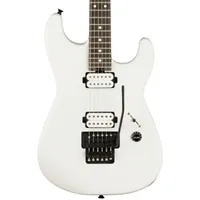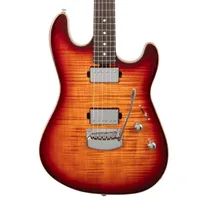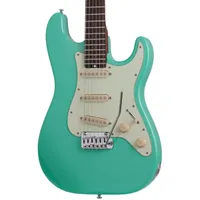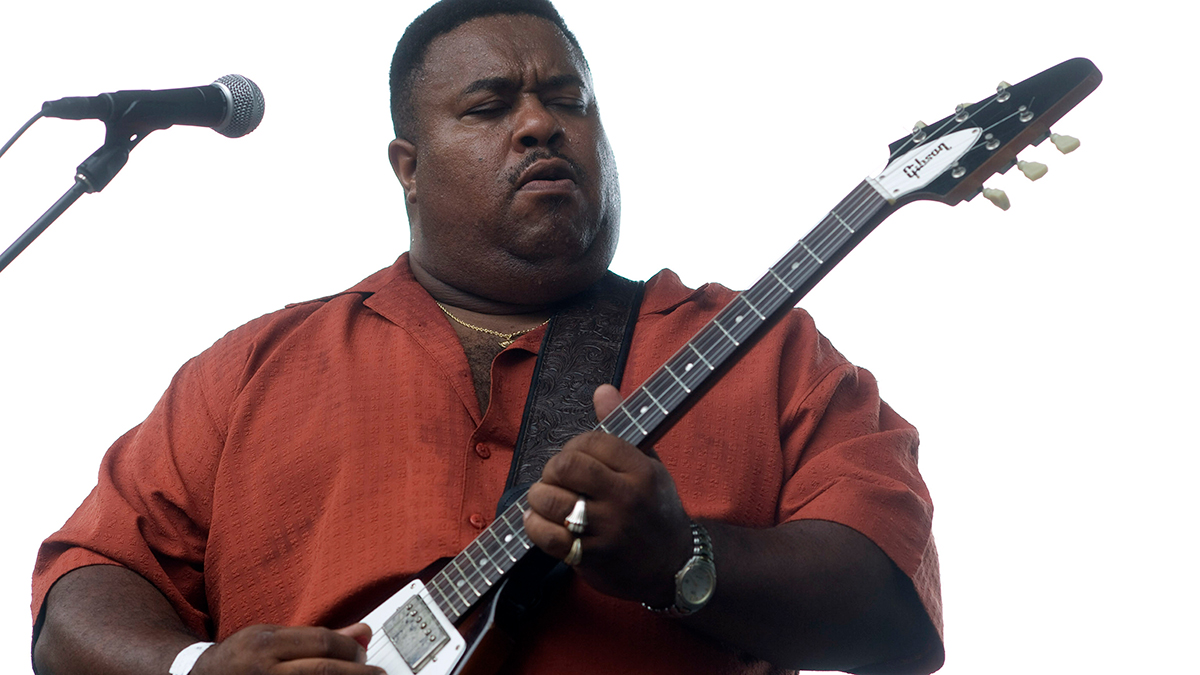Best Strat-style guitars 2025: Our choice of the finest S-style guitars for all budgets and players
Don’t want a Fender? Here’s our expert pick of the top Strat-style electric guitars from the likes of Ibanez, Yamaha, G&L, PRS and more
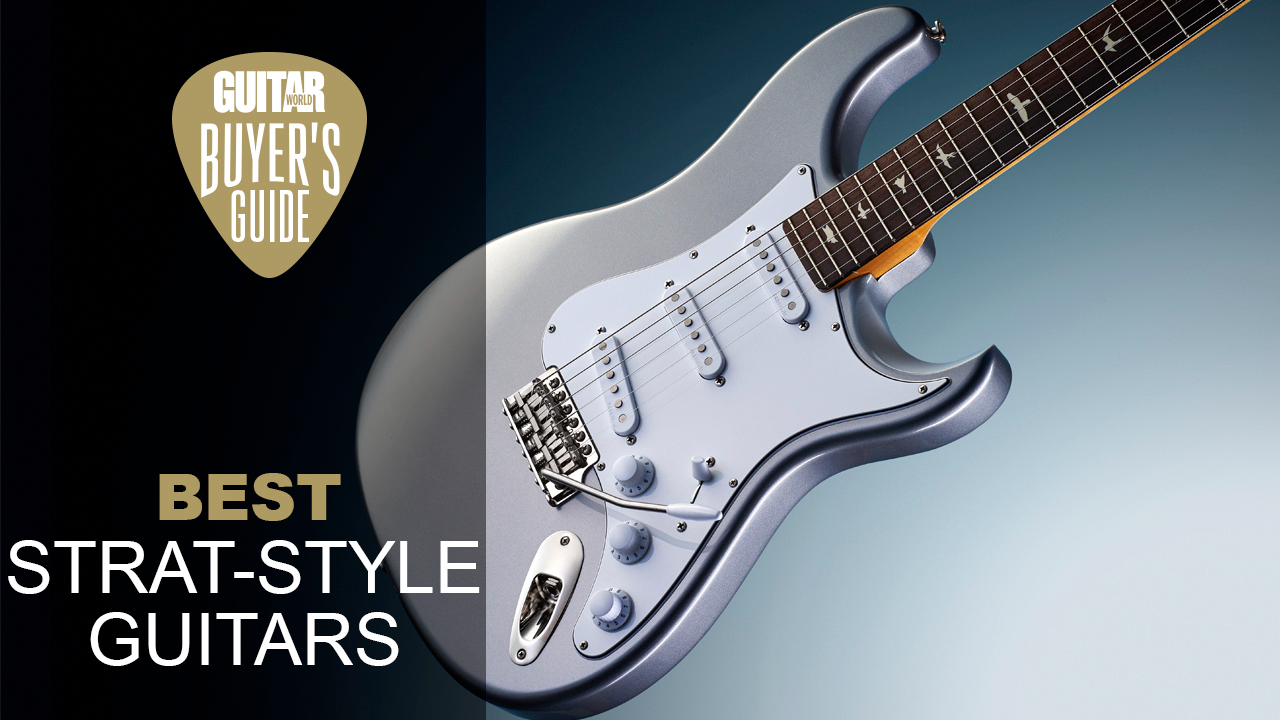
There's no question the Fender Strat is the most iconic guitar of all time, and that's evidenced by the sheer amount of models that aim to emulate it. That's not a bad thing though, and in some cases picking one of the Best Strat-style guitars can actually be a better fit than something from the stable of the big 'F'.
There's a myriad of reasons you might want to go for an S-type guitar without the Fender name on the headstock, and lucky for you, there's a huge amount of choice available. Using our collective decades of experience reviewing gear, we've rounded up some of the very best S-style guitars for those players who want those iconic looks and tones with a difference.
For us, the best of the bunch has to be the PRS Silver Sky. It was divisive when it was announced, but irrespective of that it's just a brilliant electric guitar that delivers classic tones and more. If that's a little pricey for you, have a look at the Sterling By Music Man Cutlass CT50HSS, which delivers classic S-style tones with the added versatility of a humbucker, at a price that's excellent value for money.
If you're struggling to make a decision, make sure you go check out our how-to-choose and spec comparison sections for more in-depth info. If you just want to get to the best Strat-style guitars around right now, keep on scrolling.
Our top picks

Built referencing John Mayer's own pre-CBS Fender Strats, the PRS Silver Sky is a mix of classic S-type design from that most popular of guitars, with plenty of modern advancements to take it firmly into the future. The aesthetic might be divisive, but there's no doubting it's a brilliant S-style guitar.
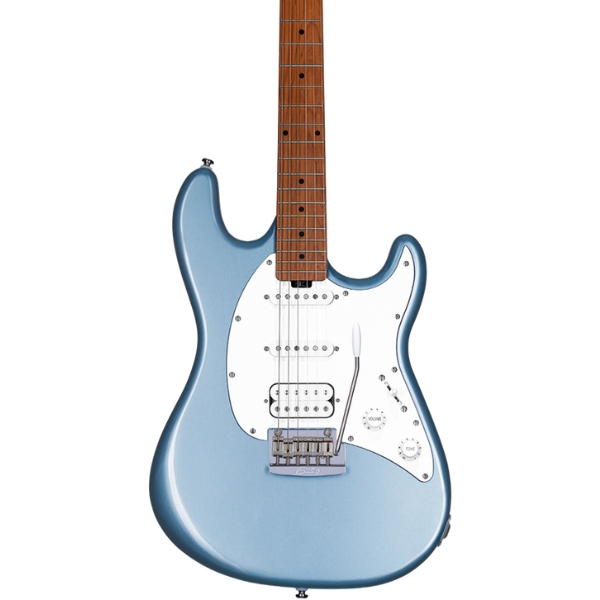
Sterling by Music Man has, in our opinion, been one of the leading budget brands in recent years – and it’s easy to see why when you take a look at the Cutlass CT50HSS. Like every product on this list, this guitar’s point of inspiration is obvious – but with a welcome Music Man twist.

If you want a classic Strat but can't bear to have the 'F' logo on your headstock, the G&L Fullerton Deluxe Legacy gives you a guitar designed by Leo Fender minus the name. It's a classic Strat-style guitar with three Alnico pickups, a tremolo, and 5-way pickup selector, but adds some neat features to differentiate it from the original.
Best overall
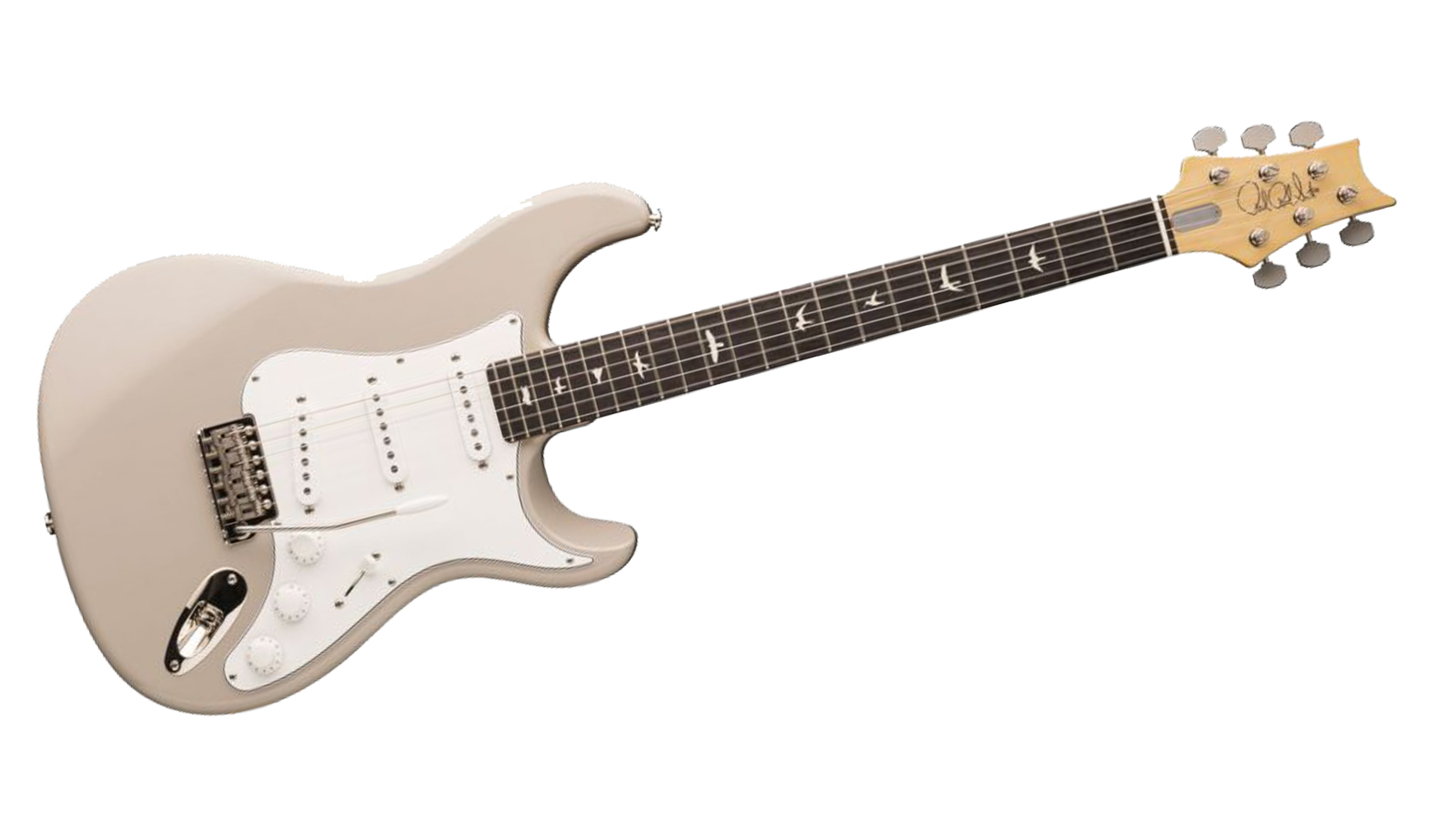
1. PRS Silver Sky
Our expert review:
Specifications
Reasons to buy
Reasons to avoid
When it was unveiled, PRS’s Silver Sky was one of the most controversial guitars in a long time. John Mayer’s move from Fender to PRS was understandable – to have a PRS signature guitar is to be part of a pretty exclusive club – but his signature model took some pretty obvious inspiration from another, very famous guitar…
Like every single guitar in this guide, the Silver Sky is a Strat-style instrument – and with its Alder body and Maple neck, its inspiration runs a little deeper. Those Strat tones are well within reach with the Silver Sky, with the 635JM pickups bringing a sweet, rich bottom end to the mix as well as plenty of chimey treble. The ‘635’ moniker is to explain John Mayer’s reference point regarding both the pickups and the neck shape – somewhere between a ’63 and ‘64 Strat – and with a 7.25” radius fingerboard, there’s a killer vintage feel to this guitar that we adore.
It’s a super solid guitar. In its neutral position, the trem is flush against the body of the guitar to increase resonance and acoustic volume, and the vintage-style locking tuners do wonders for the tuning stability. It does look and sound very close to a Fender, but the feel of the Silver Sky is the main reason this guitar is so special. There’s something about it that’s very hard to describe – so go and play one.

"Guitarists may reach for their glasses when they first see the PRS Silver Sky’s combination of PRS and Strat features, but they’ll reach for their wallets once they pick it up and play it, as it’s one of the finest three-pickup solid bodies ever produced."
Read more: PRS Silver Sky review
Best budget
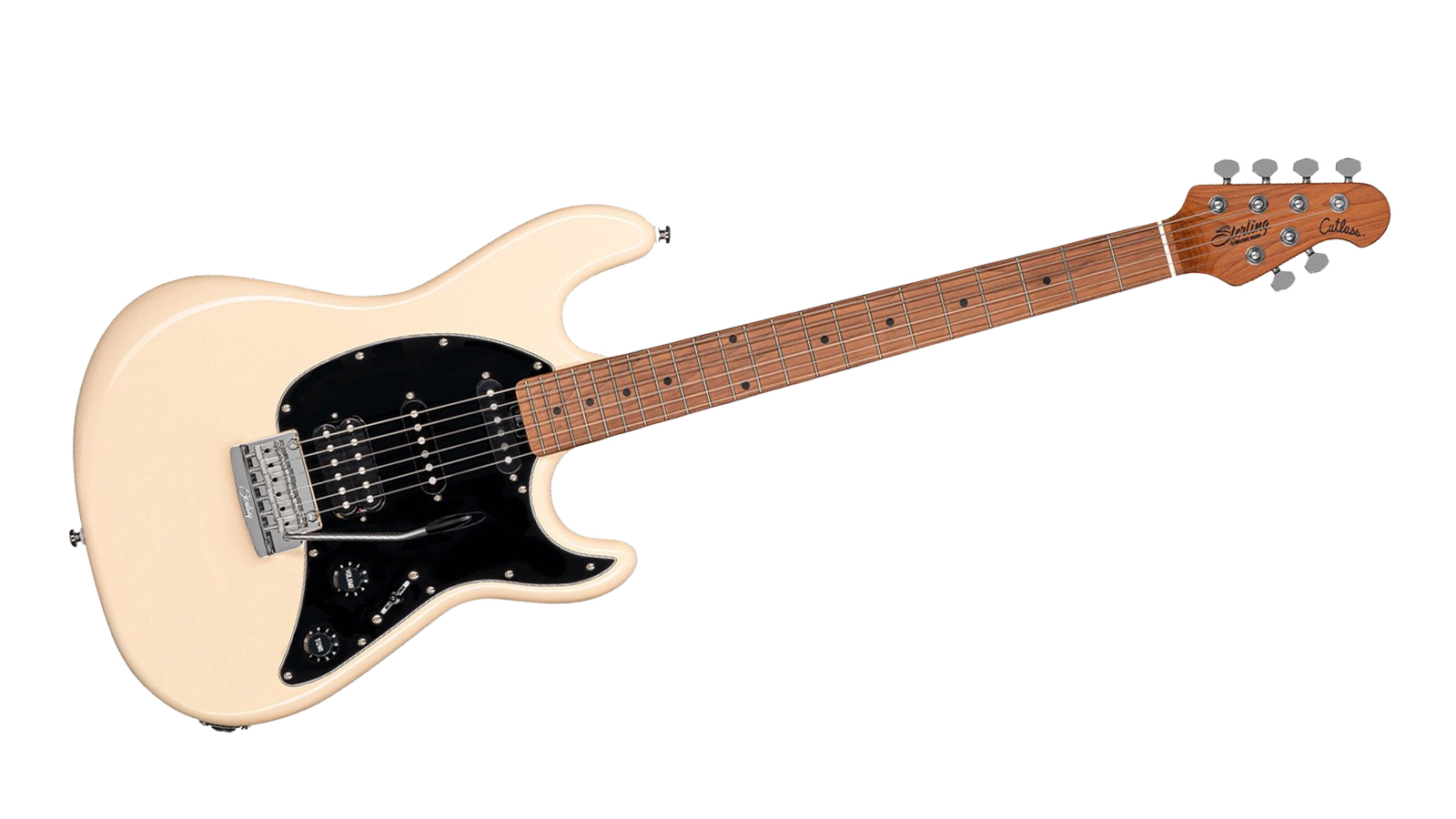
Specifications
Reasons to buy
Reasons to avoid
Sterling by Music Man has, in our opinion, been one of the leading budget brands in recent years – and it’s easy to see why when you take a look at the Cutlass CT50HSS. Like every product on this list, this guitar’s point of inspiration is obvious – but with a welcome Music Man twist, the Cutlass offers up a great playing experience which you just can’t get from a traditional Strat.
The CT50HSS has a poplar body with a bolt-on roasted maple neck and matching fingerboard. The poplar/maple combination of materials seems to be a go-to for the budget end of the Strat-style product category, but we’re impressed by the gutsy resonance and sophisticated tones this guitar produces. The roasted maple on the neck and fingerboard is not only hugely aesthetically pleasing, but provides the signature snappy, bright top end you’d expect from a guitar of this style.
While still in the ‘budget’ end of the price spectrum, the CT50HSS feels and sounds like a guitar worth a whole lot more. The build quality is nigh-on flawless, and feels solid, secure and reassuring in the hand. The pickup configuration delivers an impressive array of tones, and is happily capable of anything from sparkly country cleans to hard-rock gain. The bridge humbucker will even kick out some metal tones, if that’s your thing.
A set of locking tuners alongside the smooth two-point trem is a touch you’d only expect to see on a guitar at a much higher price point – so all in all, we’re thoroughly impressed.

"The Cutlass CT50HSS provides an attractive balance between harmonically rich humbucker and spanky, percussive single-coil tones with a sparkly-but-full-bodied treble. It has a ton of distinctive character, standing far above the generic character of most competing solidbodies in its price range."
Read more: Sterling by Music Man Cutlass CT50HSS review
Best clone
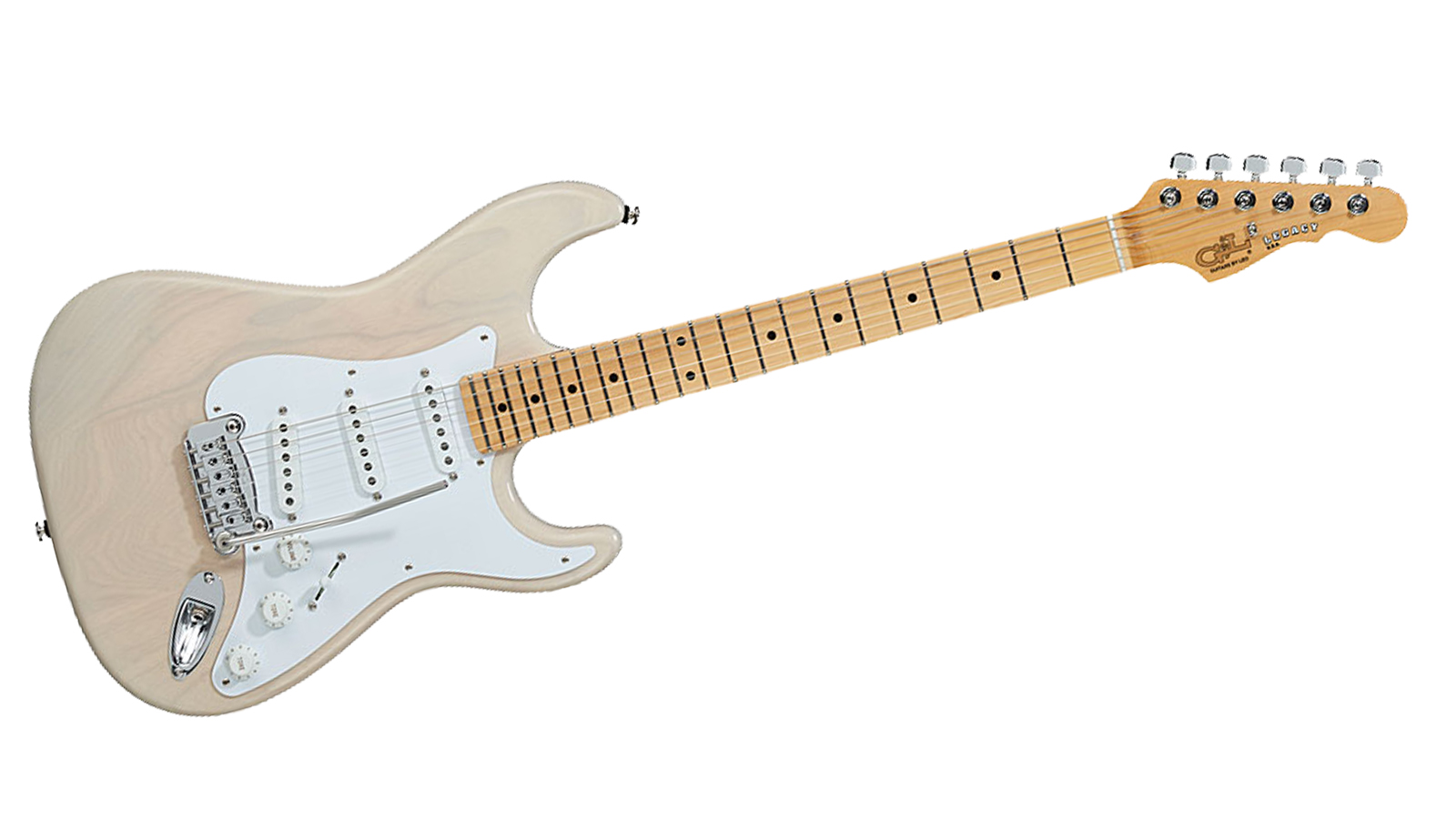
3. G&L Fullerton Deluxe Legacy
Our expert review:
Specifications
Reasons to buy
Reasons to avoid
The G&L Fullerton Deluxe Legacy is definitely the one for you if you want to get as close to a Fender Strat as possible without having it written on the headstock. Blending contemporary refinements from the Leo Fender-designed G&L S-500 and Comanche guitars with a few old-school appointments, the Fullerton Deluxe Legacy is an updated take on the O.G – and overall, we like it.
Unsurprisingly, this guitar follows the Strat blueprint more closely than any other guitar on this list. Three Alnico V single coils, two tone controls and that iconic body shape suggest that the Fullerton’s Strat inspiration may run a little deeper than just an outside appreciation – but this isn’t necessarily a bad thing. Think of the Fullerton Deluxe Legacy as a Strat that’s had things fixed up a bit. Take G&L’s P.T.B system for instance. Passive Treble and Bass controls allow you to separately cut treble and bass frequencies for greater control over your tone, and as it’s passive, your tone won’t be unduly influenced or interrupted.
The G&L, annoyingly, has only one real flaw. Unlike every other guitar in this guide – which all offer something different to the Strat – this guitar doesn’t really do that. It’s so close to the Strat, that there’s probably not much to gain in buying one of these over an original Fender. Don’t get us wrong, it’s got some very useful unique features that we love – but maybe we just don’t love them enough.
Best for shred
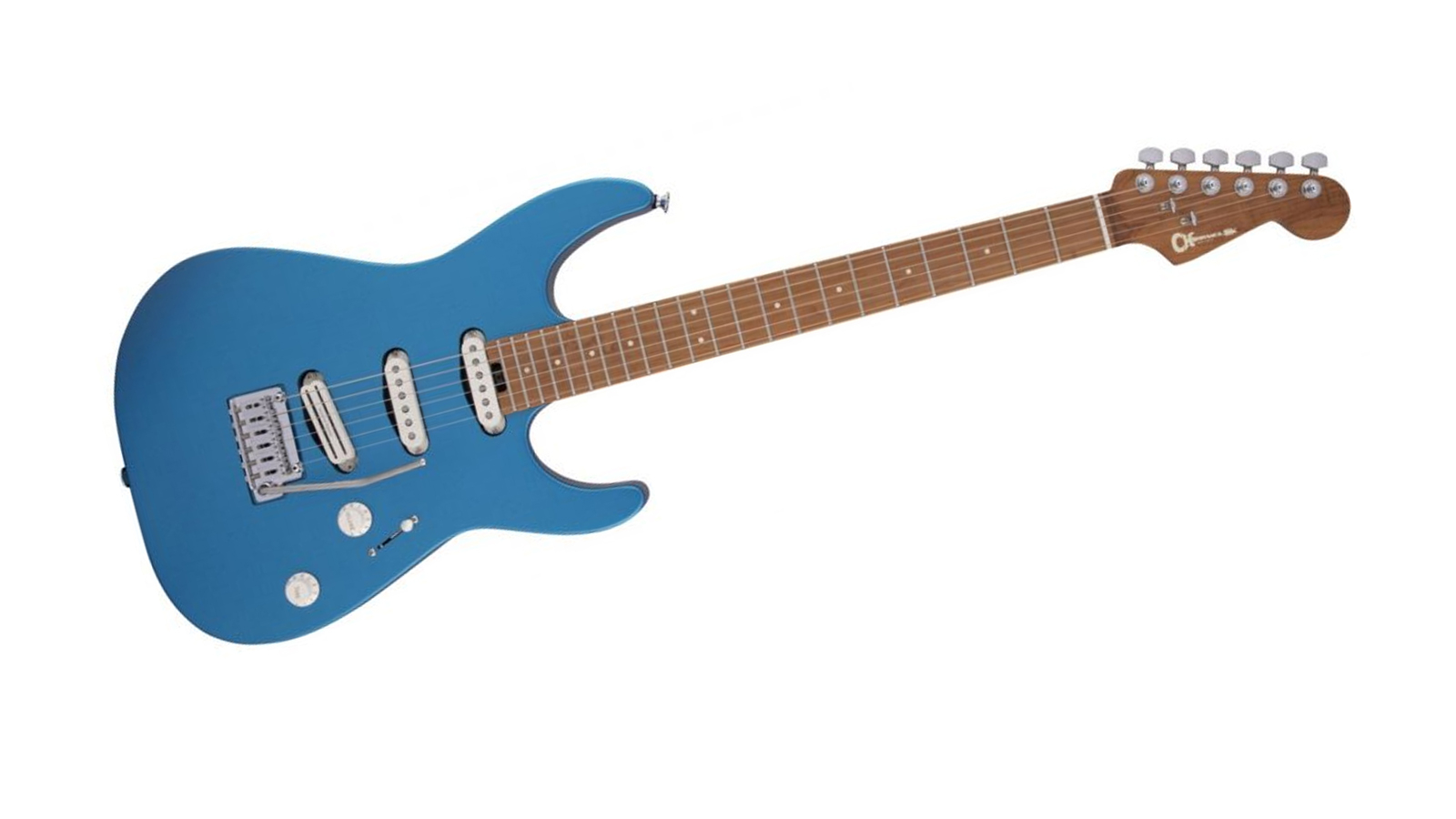
Specifications
Reasons to buy
Reasons to avoid
When talking about Strat-style guitars, Charvel is a name which comes up nearly 100% of the time. Even before they were bought by Fender, Charvel was no stranger to a double cutaway design – but after being acquired by Fender in 2002, we feel like they’re probably more qualified than ever to make a killer Strat-style guitar.
And that’s what they’ve done with the (deep breath) Pro-Mod DK22 SSS 2PT CM. Whilst their product naming strategy might need a little bit of work, the guitar itself isn’t much short of a masterpiece. Again, we’ve got the standard alder body and maple neck combo involved here – and while it may look pretty unremarkable, the neck on this guitar is one of the best we’ve ever played. It’s been baked to increase strength and resonance, and is graphite-reinforced which provides excellent stability in any climate – and the hand-rubbed satin urethane finish is a true joy. Playability is sublime overall, and we’ve personally got nothing in our ‘to improve’ list.
Routed for an SSS pickup configuration maintains the traditional vibe and look, but this guitar is blessed with the versatility of a humbucker in the bridge position. The single-coil sized Hot Rails humbucker doesn’t quite kick out the same amount of beefy low end as a full size equivalent, but this works in the DK22’s favor – providing more note clarity and precision, especially when using gain. The neck and middle pickups also deliver sweet, glassy tones with both clean and dirty tones, and plenty of Strat-esque chime. Finding any negative points about this guitar is tough – but if we could just have a white one, that’d be great.
Read the full Charvel Pro-Mod DK22 SSS 2PT CM review

"The Charvel just goes to show: you typecast electric guitars at your peril. Yes, we all know that Gretsch guitars cut plenty of mustard outside of their supposed comfort zones, Rickenbacker, too. And similarly, the Pro-Mod DK22 SSS 2PT CM is should not be pigeonholed as just another shredding machine, even if that is Charvel's core demographic."
Read more: Charvel Pro-Mod DK22 SSS 2PT CM review
Best build quality
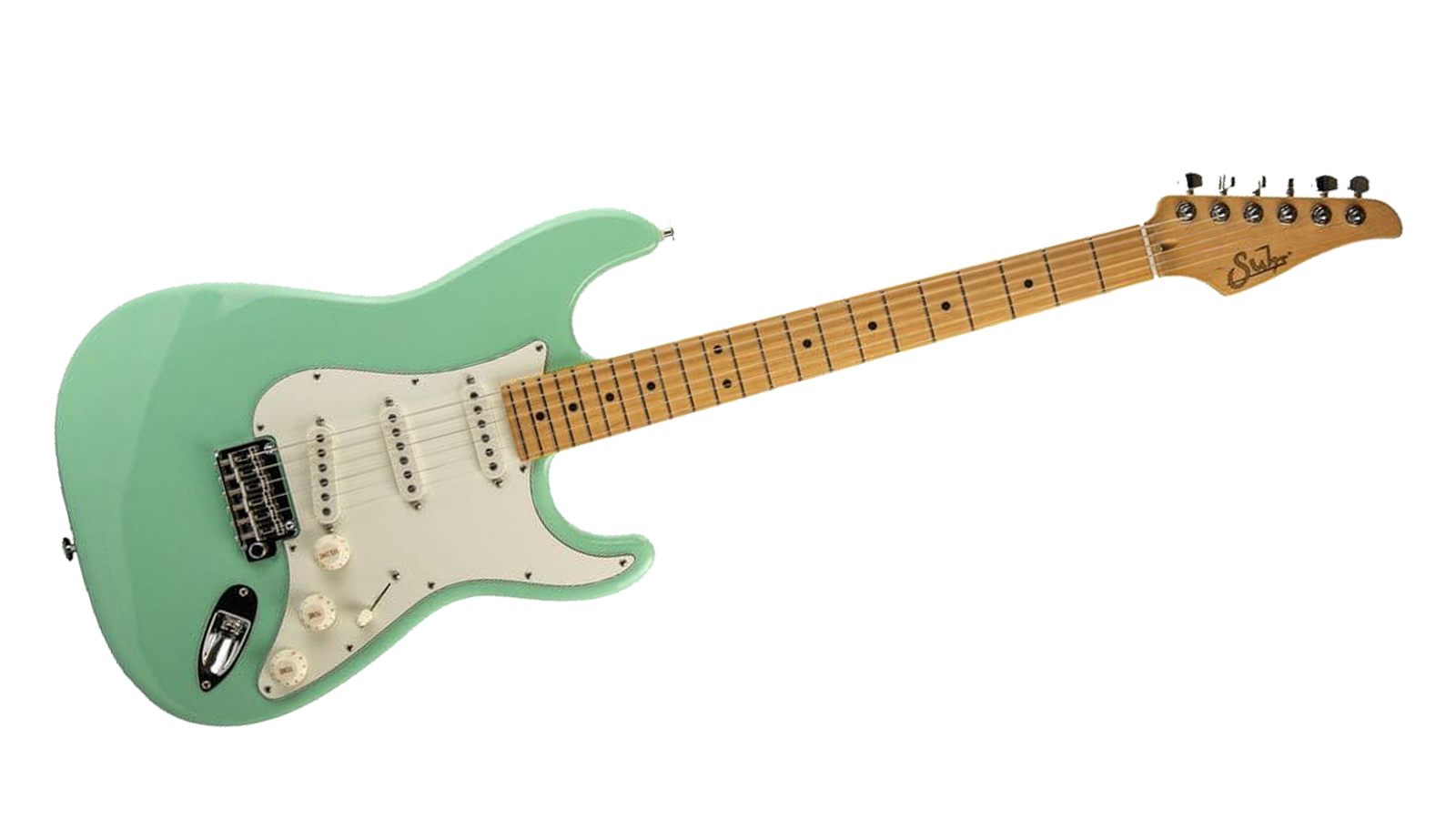
5. Suhr Classic S
Our expert review:
Specifications
Reasons to buy
Reasons to avoid
Suhr is one of the most iconic brands in the industry when it comes to Strat-style guitars. Having produced modern-specced Superstrats for many years, the Classic S shows Suhr turning their hand to the old-school, classic spec instruments that we know and love.
The alder body and maple neck are an unsurprising combination here, delivering a huge array of vintage-inspired Strat tones with loads of musical brightness and shimmer. It’s hard to explain these tones without sounding like a romantic poet, but the Suhr Classic S has a natural air-y tonal quality which makes any tone sound wide and thoroughly pleasing to the ear.
With a ‘60s C Vintage Standard neck profile, this neck is a super comfortable and enjoyable one to navigate – and the 9” to 12” compound fingerboard radius makes strings easy to bend, legato playing a dream and those thumb-over-the-top open chords achievable in the lower frets.
With Suhr locking tuners, a Gotoh 510 trem with a steel block and an overall second-to-none build quality, we’re unsurprised to hear that Suhr is creating some of the best Strat style instruments around. At $3,000, we’d have liked something that looks a little more extravagant, but the classic look is one we enjoy all the same.
Best for gigging

Specifications
Reasons to buy
Reasons to avoid
The Yamaha Pacifica range has for many years been more closely associated with beginner electric guitars, but this is no entry-level electric. The Pacifica Standard Plus PACS+12M is a proper workhorse guitar that is versatile enough to cover a huge array of styles and sounds, making it great for gigging players who want an S-type guitar.
I really love the weight and feel of the Pacifica Standard Plus' Alder body, and a curved neck heel ensures excellent playing comfort. A forearm bevel ensures that no matter how long you're playing for you'll stay comfortable on stage or laying down tracks in the studio.
The HSS pickup configuration further adds to the versatility of this guitar, giving you a huge range of tone options. Whether you want to play pop or funk licks with the neck single coil, or dig into some hard rock with vintage-voiced humbucker, PACS+12M can do pretty much anything.
Add in a treble bleed circuit to ensure your tone stays pristine no matter where the volume knob is, and you've got an incredibly powerful S-type guitar that have your back no matter what kind of band you're playing with.

"To be honest, for the style, it’s a near-perfect. Yes, there’s plenty of competition from the usual suspects, and some might be thinking that the price, certainly compared to the higher end of other Indonesian-made guitars, is steep."
Spec comparison
Struggling to decide between a few options? Here I've laid out all the key specs for each of our top picks to help you make a decision.
Model | Body | Neck | Fingerboard | Frets | Pickups | Finishes |
|---|---|---|---|---|---|---|
PRS Silver Sky | Alder | Maple | Rosewood/Maple | 21 | SSS | 7 |
SBMM Cutlass CT50HSS | Poplar | Roasted Maple | Rosewood/Roasted Maple | 22 | HSS | 3 |
G&L Fullerton Deluxe Legacy | Alder/Western Sugar Pine | Maple | Rosewood/Maple | 22 | SSS | 9 |
Charvel Pro-Mod DK22 | Alder | Caramelized Maple | Caramelized Maple | 22 | HSS | 3 |
Suhr Classic S | Alder | Maple | Rosewood/Maple | 22 | SSS | 6 |
Yamaha Pacifica Standard Plus | Alder | Maple | Rosewood/Maple | 22 | HSS | 3 |
Also consider
If you didn't find what you were looking for above don't fear, there are plenty of great options if you're looking for an S-style electric guitar. Here are some more great options you should consider.
Yamaha Pacifica 612V MKII
Alder | Maple | Rosewood | 22-frets | HSS
The Alder body and maple neck combination offers great resonance, punch and brightness, and delivers that iconic Strat-style tone with the modern precision which Yamaha does so well. A set of killer Seymour Duncan pickups from stock is a true gift, with this guitar delivering tones well above its price bracket. The Pacifica has always been a modder’s dream guitar, but this 612V MKII has essentially had all the expected upgrades done straight from the factory, meaning that it has the spec list of a guitar you’d expect to pay four digits for.
★★★★½
Read more: Yamaha Pacifica 612V MKII review
Charvel Jim Root Signature Pro-Mod San Dimas Style 1
Mahogany | Maple | Ebony/Maple | 22-frets | HH
In terms of playability, this Charvel plays like a dream. From the contoured neck heel to the 12”-16” fingerboard radius and rolled fingerboard edges, everything has been purposefully designed for performance. On top of this, it’s not a Jim Root guitar without some seriously gnarly pickups, and the EMG-designed signature Daemonum open-coil active humbuckers don’t disappoint.
★★★★½
Read more: Charvel Jim Root Signature Pro-Mod San Dimas Style 1 review
Ernie Ball Music Man Sabre
Okoume w/ Flame Maple Top | Roasted Maple | Roasted Maple | 22-frets | HH
The sheer material worth of this guitar is insane. From a body made from solid Okoume, to a 13mm thick piece of flamed maple for the top and a roasted figured maple neck, this guitar looks just as epic as it sounds. The custom wound Music Man humbuckers are Alnico V (bridge) and Ceramic (neck) magnets, and are quoted as having outputs of 18k and 12.2k respectively. With a 5-way switch to help you access these incredible tones, the Sabre is versatile enough to take you on any musical adventure you so wish.
★★★★½
Read more: Ernie Ball Music Man Sabre review
Ibanez AZ2204 Prestige
Alder | Roasted Maple | Roasted Maple | 22-frets | HSS
Even with a fairly basic material palette to work with, Ibanez still manages to make something impressive – with the roasted maple neck of this AZ2204 providing not only a hugely pleasurable aesthetic experience, but also a dreamy playing experience. The profile is the AZ’s own oval profile, and it works well for virtually all playing styles. There’s enough to it that you can happily dig into some big open chords, and the smooth satin finish makes virtuosic legato playing easy as pie too. The stock Seymour Duncans do the rest of the heavy lifting here, providing a versatile and balanced experience thanks to their Alnico V magnets.
★★★★½
Schecter Nick Johnston Traditional
Alder | Maple | Ebony | 22-frets | SSS
Like most Strat-style guitars, the Alder body/Maple neck combination is employed here. The tone that this material combination provides has a fantastic, traditional vibe which you’d expect to get from any instrument with this body shape and pickup configuration, but this Schecter has something individual and special about it. The radius of the fingerboard – an ultra-playable 14” – provides a comfortable base for any type of legato playing or string bending. However, as far as flat fingerboards go, it’s up there with some of the flattest – something to be aware of if you’re into more vintage specs.
★★★★½
Ibanez AZES40
Poplar | Maple | Jatoba | 22-frets | HSS
The AZES40 is equipped with an HSS pickup configuration, with an Ibanez ‘Accord’ bridge humbucker and two ‘Essentials’ single coils in the middle and neck positions. A slightly cheaper SSS-equipped version (the AZES31) is available for those who want a more authentic ‘Strat’ vibe, but the versatility that a bridge humbucker affords is greatly appreciated – especially when combined with the ‘alter’ switch, which provides series and parallel pickup selections.
★★★★☆
How to choose

Before buying one of the best Strat-style guitars, there are a few factors you should consider. There’s a huge amount of variation available among the instruments in this product category, going all the way from super-traditional to ultra-modern – so it's important to know exactly what you’re looking for.
1. Price point
You can trust Guitar World
There are a lot of S-type guitars out there, so setting a budget is a good way to limit your options and find a good match. In an ideal world we'd be able to spend as much as you like, but just because you have a small amount to spend doesn't mean you can't get a great Strat-style guitar. The actual amount is entirely up to you, but rest assured you won't be limited for choice whether you've got a little or a lot.
2. Playing style
Think about your playing style. Do you spend your practice time chicken-pickin’, getting into the world of Americana, chopping about like a funk god or practising your sweep-picking? While it may be true that most guitars suit most styles of playing, we’re talking about finding your perfect guitar here, so knowing what suits your playing is an absolute must.
For players who like to play more traditional styles of music, something with a fairly authentic set of specs will be most suitable for you. A thicker neck profile and rounder fingerboard radius will help you dig in to those big open chords a little more and a set of lower-output pickups will provide you with all of those classic vintage-inspired clean and dirty tones.
If you tend to play more extreme styles, then any of the more modern-spec instruments in this guide would suit you better. Thin neck profiles, flatter fingerboard radii and higher-output pickups will see you right in this instance. Thankfully, with brands like Charvel and Ibanez guitars producing so many different modern-spec Strat-style instruments, you should have no trouble finding a guitar on which you can shred.
3. Pickup configuration
While the classic Strat has three single-coil pickups, if you want a little more versatility we'd suggest going for an S-type with a humbucker in the bridge position. Having a humbucker allows you to cover harder rock and even metal depending on its output, and most models allow you to 'split' the humbucker to retain those classic Strat bridge position single-coil sounds.
If you prefer vintage Strat tones, then you'll definitely want to go for a classic SSS pickup configuration. There are loads of options here, but generally Alnico single-coils will deliver the best vintage Strat-style tones.
FAQs
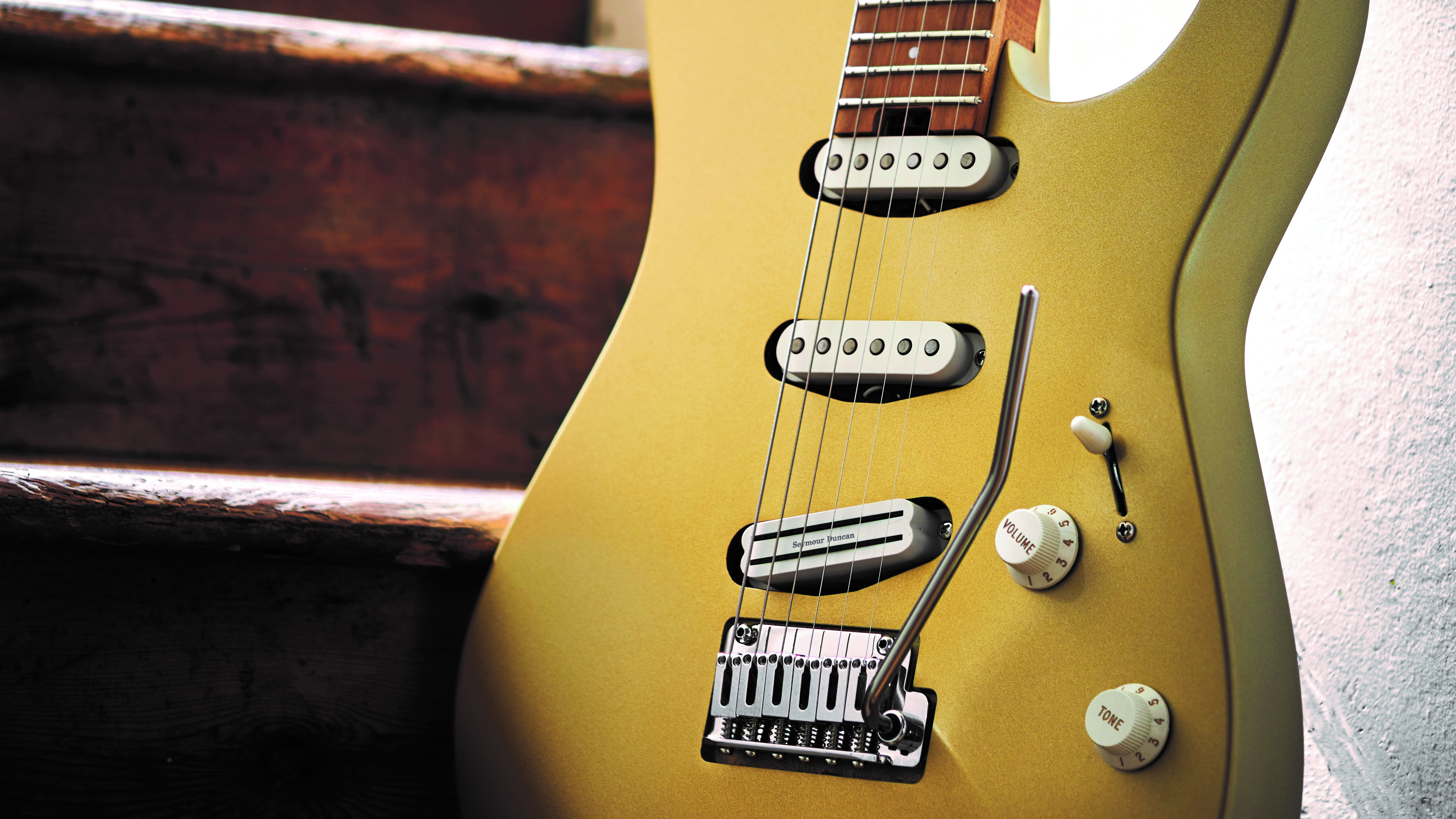
What is a Stratocaster style guitar?
A Stratocaster style guitar is typically any electric guitar that's based on the classic Fender Stratocaster. That usually means three single coil pickups, a 5-way pickup selector, and a double cutaway body shape. The body will usually be made from Alder, and the neck from Maple, a classic combination.
Which brands make the best Strat-style guitars?
It’s also worth taking a moment to think about which brands you prefer, and which ones will cater for you the best. We’re lucky enough to have access to so many great guitar brands at the moment, but each one has their own style and a thing they do best.
In the Strat-style category, brands like PRS and G&L (and of course, Fender) have the traditional style covered pretty happily with classic neck profiles, vintage-inspired hardware and electronics and classy finishes.
Brands such as Yamaha, Sterling by Music Man and EBMM have the middle-ground on lock – combining old-school pickup configurations and hardware with sophisticated compound fingerboard radii and other modern features.
You’ve then got brands like Jackson, Suhr, Charvel and Ibanez, whose guitars are mostly a showcase of ultra-modern specs and features. We’re talking locking tremolos, high-output and active pickups, super-skinny neck profiles and the like.
What is the difference between a Stratocaster and S style?
There could potentially be quite a few differences, but one thing that tends to remain the same with a Stratocaster and S style guitar is the body shape. The double cutaways with the upper horn protruding further than the lower one is a feature that's universal to nearly all Stratocasters and S-type guitars. Other appointments can differ, but most S-style guitars also have a tremolo bridge, which is a classic ingredient of a Stratocaster guitar.
How we test
For us, a great Strat-style guitar has to have its own personality. When taking inspiration from such an iconic guitar, it’s easy to make a product which feels more like a ‘copy’ than its own entity – and if your Strat-style guitar is too similar to the original Strat, then what’s a player going to gain from buying one over a Fender?
The Strat has certain qualities that should be borrowed, though. The body shape and pickup configurations are two of the features that gave the original Strat its reputation, and to make a Strat-style guitar that doesn’t share at least one of these criteria is just plain wrong. At the very least, any Strat-style guitar should share the body shape of the original.
When testing a Strat-style guitar, we'll take the same approach as we would any kind of guitar. That means first looking at the overall build quality of the instrument. We're looking to see if it's been well put together, if there are any blemishes on the finish, sharp fret ends, poorly mounted pickups, wonky tuners, or anything else that might point to substandard quality.
Once our chosen instrument has passed this test we'll then look at the playability of the instrument, sitting (or standing) to play all over the fretboard. We're looking for the neck feel in the hand, how the guitar has been set up out of the box, how it reacts to different pick attacks and picking techniques. We'll try it with regular flatpicking and fingerpicking, ensuring to note down all of our findings for the final review.
Next, we'll perform the sound test. Plugging the guitar into a variety of sources from tube amps to amp modelers to audio interfaces, we're looking to see how the guitar performs in a variety of situations. This allows us to make an assessment of the instruments' tonal qualities.
Find out more about how we make our recommendations and how we test each of the products in our buyer's guides.
Related buying guides
- Check out the best guitars for kids
- These are the best guitars under $1,000
- The best Squier guitars
- Pair your Strat-style axe with one of the best guitar amps
- Play it loud with the best punk guitars
- Take a glance at the best combo amps
- Turn it up while keeping it down with the best headphone amps for guitar
All the latest guitar news, interviews, lessons, reviews, deals and more, direct to your inbox!

Matt is a Junior Deals Writer here at Guitar World. He regularly tests and reviews music gear with a focus on guitars, amps, pedals, modelers, and pretty much anything else guitar-related. Matt worked in music retail for 5 years at Dawsons Music and Northwest Guitars and has written for various music sites including MusicRadar, Guitar Player, Guitar.com, Ultimate Guitar, and Thomann’s t.blog. A regularly gigging guitarist with over 20 years of experience playing live and writing and recording in bands, he's performed everything from jazz to djent, gigging all over the country in more dingy venues than you can shake a drop-tuned guitar at.

